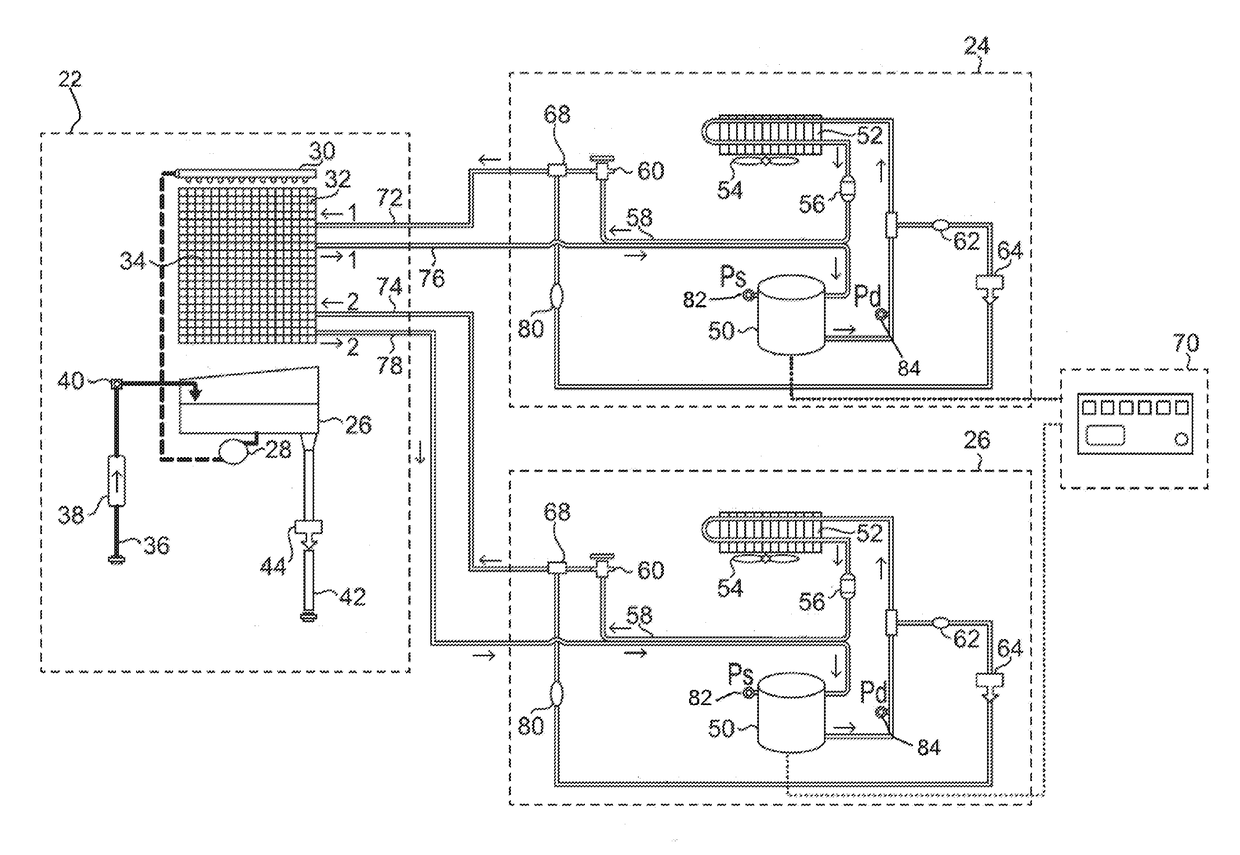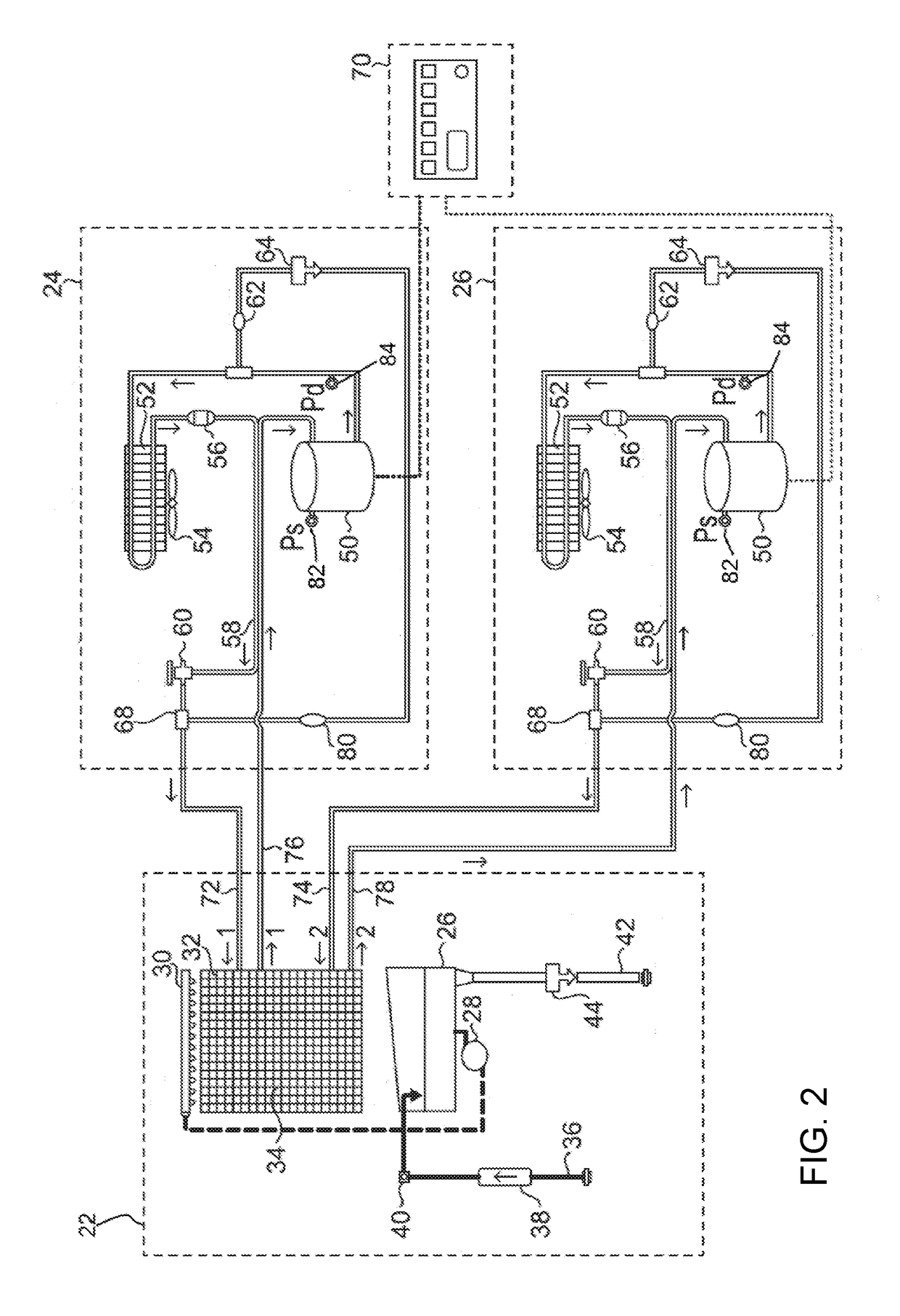Ice machine with a dual-circuit evaporator for hydrocarbon refrigerant
a technology of hydrocarbon refrigerant and ice machine, which is applied in the direction of compression machines with several condensers, applications, lighting and heating apparatus, etc. it can solve the problems of inability to determine the indirect release of refrigerant over the life of the equipment due to infinitely small leakage, and the ice is usually of poor quality, so as to save material costs and ensure the effect of ice production
- Summary
- Abstract
- Description
- Claims
- Application Information
AI Technical Summary
Benefits of technology
Problems solved by technology
Method used
Image
Examples
Embodiment Construction
[0019]Before any embodiments of the invention are explained in detail, it will be understood that the invention is not limited in its application to the details of construction and the arrangement of components set forth in the following description or illustrated in the following drawings. The invention is capable of other embodiments and of being practiced or of being carried out in various ways. Also, it will be understood that the phraseology and terminology used herein are for the purpose of description and should not be regarded as limiting. The use of “including,”“comprising,” or “having” and variations thereof is meant to encompass the items listed thereafter and equivalents thereof as well as additional items. All numbers expressing measurements and so forth used in the specification and claims are to be understood as being modified in all instances by the term “about.” It should also be noted that any references herein to front and back, right and left, top and bottom and ...
PUM
 Login to View More
Login to View More Abstract
Description
Claims
Application Information
 Login to View More
Login to View More - R&D
- Intellectual Property
- Life Sciences
- Materials
- Tech Scout
- Unparalleled Data Quality
- Higher Quality Content
- 60% Fewer Hallucinations
Browse by: Latest US Patents, China's latest patents, Technical Efficacy Thesaurus, Application Domain, Technology Topic, Popular Technical Reports.
© 2025 PatSnap. All rights reserved.Legal|Privacy policy|Modern Slavery Act Transparency Statement|Sitemap|About US| Contact US: help@patsnap.com



